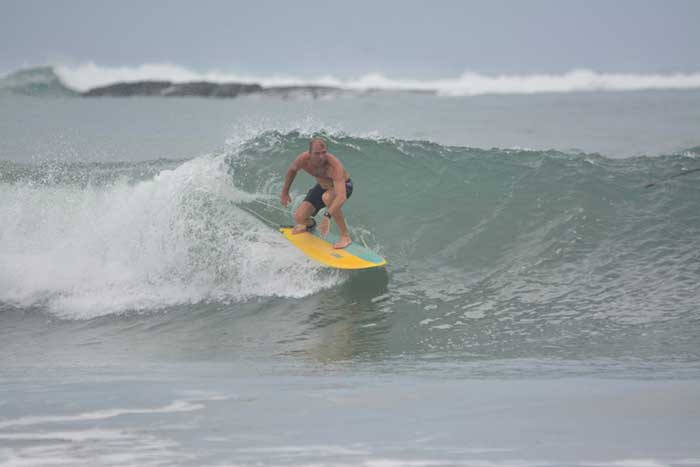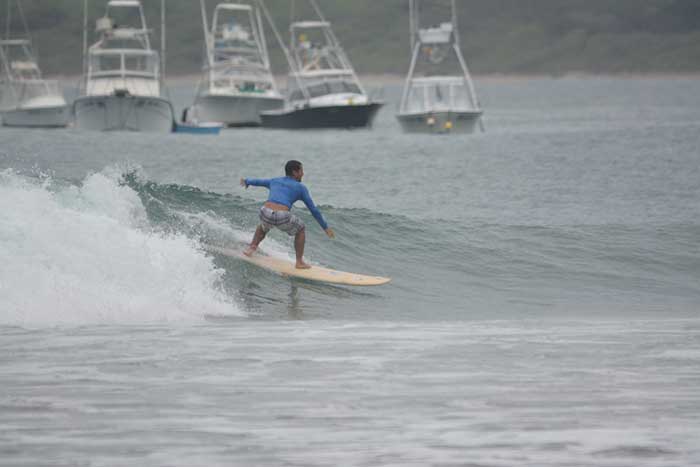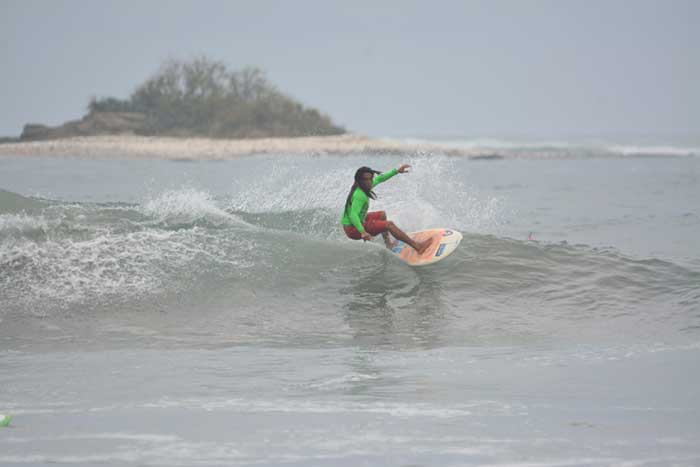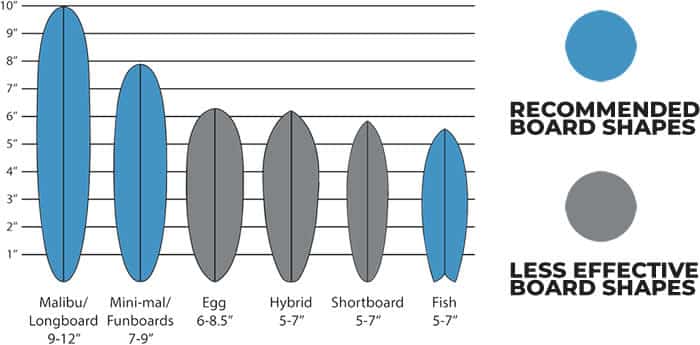
Capitán Suizo - Playa Tamarindo
Wave Quality: Average (6.5 / 10)
Ideal Swell Direction: SW (215° – 230°) NW (280° – 305°)
Ideal Wave Height: Thigh high – head high
Best Wind Direction: E / ESE / SE
Best Tide: Mid-high
Required Experience: Beginner – advanced.
Best Board: Soft-top, longboard, funboard, fish, shortboard
Bottom: Sand and a few rocks
Crowd: Moderate – heavy
Wave Power: (5 / 10)
Best time of the year: July – August and December – March
Capitán Suizo - Playa Tamarindo
Location – The Capitán Suizo surf break is located at the far south end of Playa Tamarindo, approximately 500 meters south of Henry’s Right.
The main waves break at Capitán Suizo right before the beach ends and the rocks begin to form along the shore.
Wave Type / Quality – Left and right beach break (6 / 10) Average – Good
Capitan Suizo has an interesting set up. It is located directly inside of the offshore Island, Isla Capitan. This unique location allows incoming swells to wrap in from both sides of the island and wedge up for user-friendly waves with open lines and long rides. The wave does not barrel much, but it will reform several times and can offer a mellow ride up to 200 meters on it’s best days.
Ideal Swell Direction – SW (215° – 230°) NW (280° – 305°)
At the southernmost point of Tamarindo, a SW swell will sneak through the gap between Isla Capitan and the south point of Tamarindo bay. Capitan Suizo also has a favorable orientation to receive steep NW swells (280° – 305°).

Ideal Wave Height – thigh – head high
Capitan Suizo can range from a beginner’s mecca on small swells to a rippable, walled up leg-burner that even advanced surfers can enjoy on bigger swells. The wave has very fun, non-threatening shape and open lines no matter the swell size. When the swell gets in the head high range, it breaks pretty far out.
Best Wind Direction – E / ESE / SE
One of the best characteristics about Capitan Suizo is the unique, West-Northwest orientation of the beach and that the surf spot is adjacent to a protective point to the south. Many times when the wind turns south, every other spot will be blown out and sideshore while Capitan Suizo remains protected and somewhat offshore.
Rubber? – Yes (December – April)
Bring some rubber especially if the winds have been blowing offshore for several days. Although rare, water temps can drop down to about 63°F. This is a phenomenon called upwelling. Normally, water temps hover in the 75° – 80°F range. Upwelling really only happens a few times during the dry season. A wetsuit top generally comes in handy for dawn patrol sessions year round.
Best Time To Score? – July – August and Dec – March
July and August are known as Costa Rica’s “Mini-Summer” months where we receive consistent SW swells and offshore winds. This is your best chance of scoring a big swell and long lined-up waves. .December – March is when we receive our NW swells and this unique angle (280 – 300) will sneak into Capitan Suizo without any shadowing.

Best Tide – Mid – high
Capitán Suizo is ideal with the medium – high tide. As the tide rises and the offshore island is covered partially covered with water, the incoming swells will lose less energy wrapping around the island and maintain more size as they hit the beach. The wave at mid tide is a little more walled up and racey and the wave at high tide can be mushy, but still fun for a long ride.
Required Experience – Beginner – advanced
Depending on the size, Capitán Suizo can offer great waves for all levels. Beginners can catch clean open lines on small days and Advanced surfers can enjoy long rides and multiple turn sections on bigger swells.
Best Board – Soft-top, longboard, funboard, fish, shortboard
Any type of board will work here. The wave is soft enough for a longboard, but powerful enough for a fish or shortboard.

What’s On The Bottom? Sand and a few rocks
There are a few rocks on the southern side of the break next to the point, but it is very rare that you will ever notice them.
What’s The Crowd Like? – Moderate – heavy
Capitan Suizo is a popular beach for lessons. It is not as centrally located at the beach break in front of Witch’s Rock Surf Camp, but you will generally be sharing the waves with lots of fun-loving beginners / intermediates. When the swell gets really big, many advanced surfers will paddle out and the crowd can get a little intense. The good thing is that the take off zone is pretty spread out and there will be surfers on the outside and surfers on the inside reforms.
How Powerful Is The Wave? (5 / 10)
The wave is very unthreatening. It breaks in pretty deep water the whole way through so not much of a barrel. There are sections where the wave bends towards you giving you some extra speed and the ability to crank out some powerful maneuvers.
Perfecto Meter – (6.5 / 10) (1 = Lake Michigan wind chop / 10= Kelly Slater Surf Ranch)
On an ideal day with the perfect swell angle, offshore winds, and decent size, the wave offers 200 meter long left and right handers which break pretty far out and gently roll all the way to the beach. There are times when you will start off going right, and then re-direction left, and then right again.
Spaghetti Arm Index – (6 / 10)
When the swell is small, the paddle out is minimal. When the swell is pumping, you may find yourself sitting pretty far off the beach waiting for a 200 meter leg burner. There is a semi-channel but it’s not well defined.
Hazards -Beginners, flying boards
How Do I Get There?
From the Tamarindo Beach Break you can walk to Capitan Suizo in about 15 minutes. Walk south until you reach the southern edge of Tamarindo Bay and you’ll find the surf spot.
If you are driving, take the road towards Langosta and park just south of the Langosta Beach Club. There is a small beach access path that will lead you out to the wave.
Alternately, you can drive just further south and turn right past the Capitán Suizo boutique hotel, where you’ll find another beach access trail leading you just south of the surf break.
